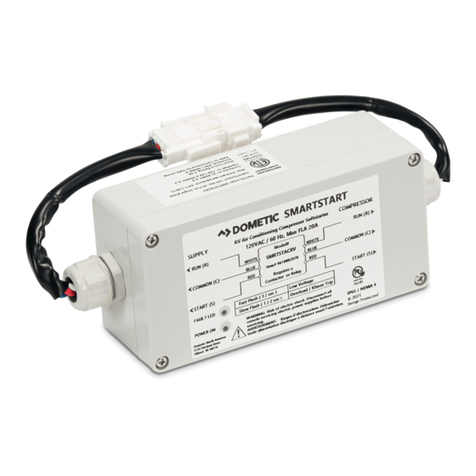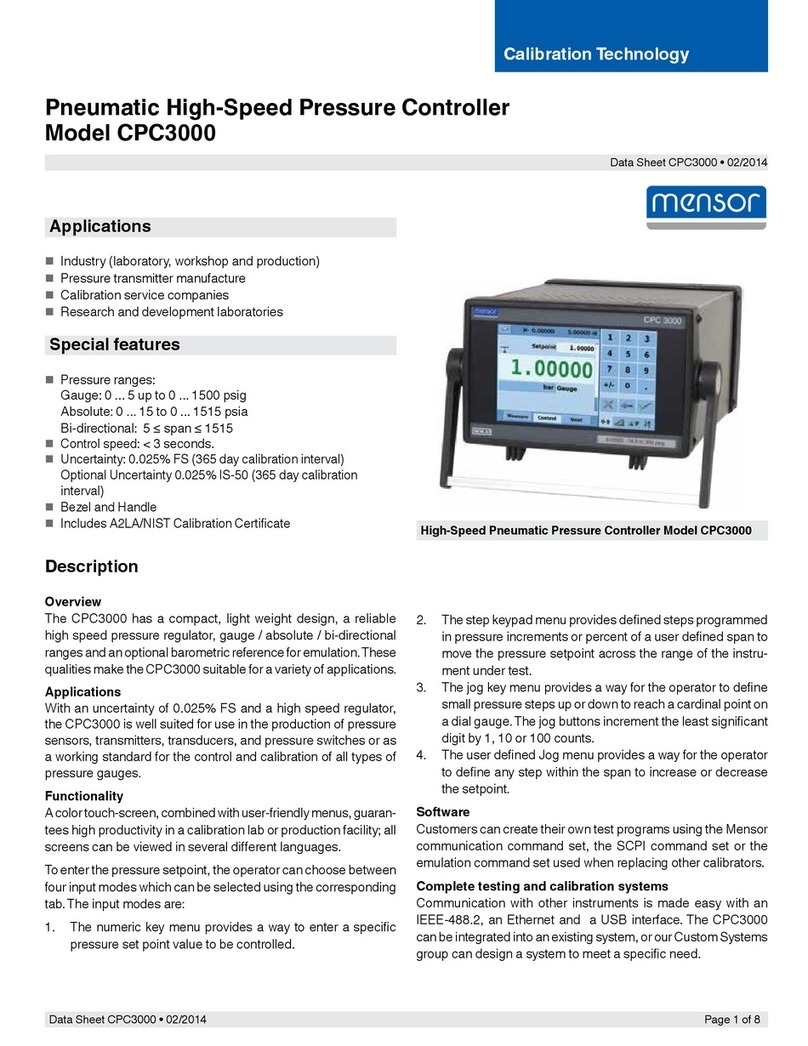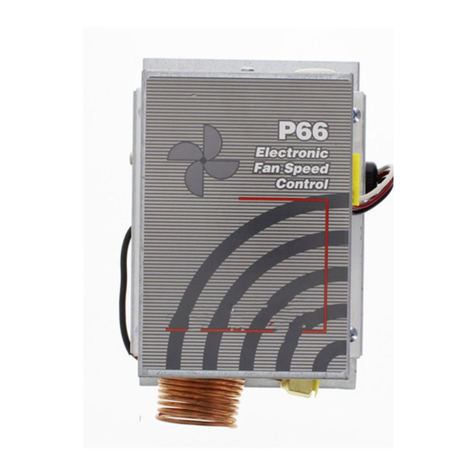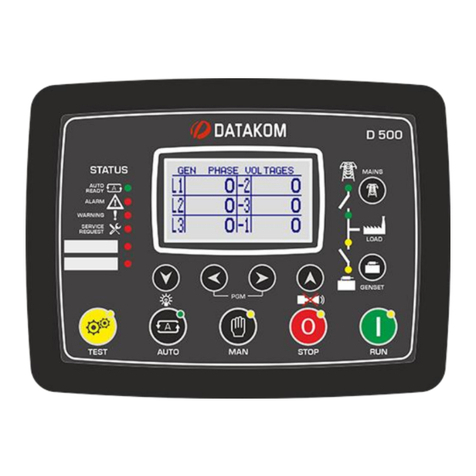Interactive Furniture Advanced 4020 User manual

Manual - Stair light controller
”Advanced 4020”

.

Inhaltsverzeichnis
1 Overview 4
1.1 Description of the control unit . . . . . . . . . . . . . . . . . . . . . . . . . . . . . . . . 4
1.2 Technicaldata......................................... 4
1.3 Pinassignment ........................................ 5
2 Commissioning 6
2.1 Installationofthesensors................................... 6
2.2 Connectingthesensors .................................... 7
2.3 ConnectingLED-illuminants.................................. 7
2.4 Connection of the twilight sensor . . . . . . . . . . . . . . . . . . . . . . . . . . . . . . . 7
2.5 Connecting the external switch for the continuous light function . . . . . . . . . . . . . . 7
2.6 Connectingthepowersupply ................................. 8
2.7 Correct use of the connection terminals . . . . . . . . . . . . . . . . . . . . . . . . . . . 8
3 Configuration of the control unit 9
3.1 Entering number of stairs (STEPS) . . . . . . . . . . . . . . . . . . . . . . . . . . . . . . 9
3.2 Calibrating the on and off switching speed . . . . . . . . . . . . . . . . . . . . . . . . . . 10
3.3 Calibrating of the pause between the switch-on and switch-off process . . . . . . . . . . . 10
3.4 Activation and calibration of the twilight sensor . . . . . . . . . . . . . . . . . . . . . . . 10
3.5 Function ”1st step illumination” . . . . . . . . . . . . . . . . . . . . . . . . . . . . . . . 10
3.6 Function”QuickStart” .................................... 10
3.7 RESET-key .......................................... 10
3.8 TEST-key ........................................... 11
3.9 Status-LEDs.......................................... 11
4 Further hardware features 11
4.1 Ambientlightning....................................... 11
4.2 Internalfuses ......................................... 11
4.3 Busconnections........................................ 11
5 Further information 12
5.1 Correctusage ......................................... 12
5.2 Operating conditions and safety instructions . . . . . . . . . . . . . . . . . . . . . . . . . 12
5.3 Disposalinstructions...................................... 13
5.4 Warrantyandliability ..................................... 13
5.5 EG-Conformity(CEmark)................................... 14
5.6 Imprint............................................. 14
6 Notes 15
This manual is printed on ‘’Recyconomic” recycled paper from 100% recycled paper.
3

1 Overview
Please ensure that you have familiarised yourself with the manual before beginning commissioning the
device. This in particular applies to the chapter ¨
Operating conditions and safety instructions¨ın section
5.
1.1 Description of the control unit
This control unit enables the sensor-controlled switching on and off of your LED stair lighting. The effect
can be easily adjusted via rotary control on the device top. An external continuous light switch as well
as a twilight sensor can be connected to the control unit and thus round off the functional spectrum.
Thanks to the modular design of the control unit, the range of functions can also be expanded easily and
cost-effectively.
The robust components, which are designed for the required size, as well as numerous integrated protective
circuits of the control unit, ensure a safe and long-lasting operation. The high-quality DIN mounting rail
housing according to DIN43880 permits safe and maintenance-free assembly directly in the house distribu-
tion.
A lot of value was also placed on ecological aspects. Through the use of high-quality components, the
power consumption during operation is less than half a watt - including the HF sensors. The control unit
is produced in Germany; of course, according to all the statutory standards and without the use of dubious
materials. For example, the use of tantalum capacitors is completely dispensed with.
1.2 Technical data
Technical data and operating conditions of the control unit:
Description MIN TYP MAX Unit
Power per LED outlet - - 500 mA
Number of outlets - - 20 Stk.
Load of controller (at 12V) 0.05 - 7,5 A
Supply voltage 7 12 24 V
Power consumption during operation (at 12V) - 0.25 - W
Operating temperature 0 +20 +40 ◦C
Technical data of the connection terminals:
Screw terminals LED control MIN TYP MAX Unit
Cross section single wire - - 1,5 mm 2
Cross section fine wired - - 1,0 mm 2
Stripping length - 5 - mm
Force on clamping screw - - 0,15 Nm
Spring-loaded terminals LED control MIN TYP MAX Unit
Conductor cross-section - - 1,5 mm 2
Stripping length 6 - 10 mm
Spring-loaded terminals sensor connection MIN TYP MAX Unit
Conductor cross-section 0,2 - 0,75 mm 2
Stripping length 6 - 7 mm
4

1.3 Pin assignment
No. Description Page
1 POWER-LED – illuminated when connected 11
2 STATUS-LED – signals operating mode 11
3 Switches to adjust number of steps 9
4 Key to activate all spots 7
5 Key to calibrate sensors 10
6 ”FUNCTIONS” panel to activate control options 10 ff.
7+8 Dials for ON/OFF time of spots 10
9 Duration of on/off timing 10
10 Dial for optional light-sensor 10
11 Connections for LED-spots 7
12 Connection SENSOR 1 for sensor at beginning of the stairs 7
13 Connection SENSOR 2 for sensor at the end of the stairs 7
14 Connection for light-sensor 7
15 Connection for the continuous light function switch 7
16 Connection of the power supply 8
5

2 Commissioning
If you are not sure about the correct connection or if questions arise which are not clarified by this
2.1 Installation of the sensors
The use of the enclosed indoor sensors makes it possible to detect people who are passing by and to
activate the running light. For this purpose, a sensor is installed at the beginning, as well as at the end
of the staircase. In contrast to an ordinary light barrier, motion detection is carried out exclusively from
a stairway and thus also allows installation on single-sided open stairs. Reflectors or additional infrared
transmitters / receivers are not required. The range of the sensor is about one meter.
In principle, two installation options are provided:
1.: Positioning of the sensor at the height of the first step: Installed such that the lighting is activated
precisely when entering the staircase. If desired, the ”Quick start” function (see section 3.6) can be used
to switch on the first three LED outputs so that the steps in front of you are instantly illuminated.
2.: Positioning of the sensor approximately 50 cm in front of the stairs: When installed just before
the staircase, the light is activated a moment before entering the staircase. This has the advantage that
the first steps are already illuminated when entering the staircase and you do not walk into darkness.
Further installation instructions:
•The installation height must be selected in such a way that the sensor is always traversed and not
stepped over. A guideline is about 20-50 cm above the ground / step.
•When mounting the sensors, ensure that they are installed horizontally with the sensor lenses to the
opposite side of the staircase. This is the only way to ensure optimal recognition.
•The sensors automatically calibrate when the control unit is put into operation and thus adjust to
the width of the staircase. This calibration is performed again at every start-up.
•The sensors should be protected against contamination and contact, since this would otherwise impair
the function of the sensors.
•It is recommended to use the supplied sensor cable. It is not permissible to loop the sensor cable
through multi-conductor cables - together with LED leads -.
•If possible, the sensor cable should be laid separately from other cables (230 V) in order to avoid
disturbances in motion detection..
6

2.2 Connecting the sensors
The bottom step sensor (LED- channel 1) should be wired to connection SENSOR 1, and the top step to
SENSOR 2.
The coloured markings of the supplied sensor cable must be connected to the control unit as well as to the
sensor connection adapter as follows:
green = + (Power supply - 5V)
brown = - (Earth/GND)
white = S (sensor connection)
2.3 Connecting LED-illuminants
The connection leads of the LED illuminants are screwed on to the connection terminals located on top
of the control unit. The polarity can be found in the graphic on page 5, as well as in the labelling on the
control unit. The first LED spot at the beginning of the stair is connected to terminal 1 of the control unit
- all further spots follow in the order in which they were installed.
The number of connected LEDs must be entered in the configuration of the control unit - see section 3.1.
Please also provide for a sufficient dimensioning of the conductor cross-section of 0.5 mm2 or greater.
2.4 Connection of the twilight sensor
The control unit supports the connection of an external light sensor to deactivate the control by day (page
5 - no. 18). A polarity is not to be considered when connecting the twilight sensor. For information on
configuring the twilight sensor, see page 10 of this manual.
CAUTION!
Not a potential-free connection! No voltage may be applied to these contacts!
Only the connection of the ”interactive furniture twilight sensor” is envisaged.
2.5 Connecting the external switch for the continuous light function
The control unit supports the connection of an external switch or relay (for example, a relay actuator
of a home automation system) to activate the continuous light function (page 5). When the ”ON” and
”GND” contacts are connected, all connected LED illuminants are activated and remain active until the
connections are disconnected. The sensor-controlled automatic is out of operation in this mode. When the
continuous light function is activated, the green ”STATUS” LED is lit continuously. See section 3.9.
CAUTION!
Not a potential-free connection! No voltage may be applied to these contacts!
Only the connection of the contacts via a switch is envisaged.
7

2.6 Connecting the power supply
The supply voltage (maximum 24V-DC) of the control unit is connected to the contact 16 of the overview
graphic on page 5. The left plus pole supplies the control unit itself as well as the LED channels 1 to 10 -
the right plus pole the LED channels 11 to 20. This allows - for the distribution of the connection load -
the use of two separate power supplies (Attention: the Minus pole is internally pressed). The polarity can
be found in the graphic on page 5 as well as in the labelling on the control unit.
IMPORTANT:
•The supply voltage must be selected in accordance with the connected LED illuminants, since these
can otherwise be damaged. Example: A 12V power supply has to be used for 12V LED strips.
•The supply voltage must not exceed 24 V (direct current).
•Use a power supply unit with sufficiently dimensioned output power.
•Make sure that the power supply is connected to the correct polarity.
•Connect both minus and both positive poles with the power supply unit, as otherwise the LEDs 11-20
are not supplied with voltage.
.
ATTENTION - DANGER TO LIFE!
NEVER connect the control unit directly to the 230V power supply!
2.7 Correct use of the connection terminals
LED control - LED outputs: Single and fine-wire cables with a cross-section of max. 1.5 mm2 can be
used. We recommend the use of wire-end terminals - otherwise, isolate the cable over a length of 5 mm.
Feed the cable into the screw terminal and screw it. Subsequently check the cable for a firm hold.
LED control - spring-loaded terminals: Single- and fine-wire cables with a cross-section of max. 1.5
mm2 can be used. Isolate the cable to a length of 6 to 10 mm and insert it into the spring-loaded terminal.
To close the spring clamp, simply move the eccentric lever downwards. Subsequently check the cable for a
firm hold.
Sensor connection adapter: Single and fine-wire cables with a cross-section of 0.2 to 0.75 mm2 can be
used. Isolate the sensor connection cables to a length of 6-7 mm. The terminals on the sensor connection
adapter can be opened by applying low pressure to the actuation press-ins - use the supplied tool. Insert
the cables into the terminals. Subsequently check the cable for a firm hold in the terminal.
8

3 Configuration of the control unit
This section outlines the configuration options for the control unit. Please ensure that you have read the
following information before starting up the control unit.
3.1 Entering number of stairs (STEPS)
The number of illuminated steps is entered using five switches (”STEPS”) on the control unit (page 5, no.
3). All further channels of the control serve the ambient lightning function (see 4.1).
Please refer to the following table for the correct switch positions:
Number of steps DIP1 DIP2 DIP3 DIP4 DIP5
5OFF OFF ON OFF OFF
6OFF OFF ON OFF ON
7OFF OFF ON ON OFF
8OFF OFF ON ON ON
9OFF ON OFF OFF OFF
10 OFF ON OFF OFF ON
11 OFF ON OFF ON OFF
12 OFF ON OFF ON ON
13 OFF ON ON OFF OFF
14 OFF ON ON OFF ON
15 OFF ON ON ON OFF
16 OFF ON ON ON ON
17 ON OFF OFF OFF OFF
18 ON OFF OFF OFF ON
19 ON OFF OFF ON OFF
20 ON OFF OFF ON ON
With 6-channel LED expansion device
21 ON OFF ON OFF OFF
22 ON OFF ON OFF ON
23 ON OFF ON ON OFF
24 ON OFF ON ON ON
25 ON ON OFF OFF OFF
26 ON ON OFF OFF ON
9

3.2 Calibrating the on and off switching speed
The speed of the switching on and off process of the light-emitting diodes can be adjusted separately with
the ”ON SPEED” and ”OFF SPEED” controllers
Turning the control dial ”ON SPEED” in a counter clockwise direction slows the switching on speed
of the LED-illuminants down to a maximum of one second per spotlight. When turned clockwise, this can
be sped up this process to a minimum of 20 milliseconds per spotlight. The change in the ”OFF SPEED”
controller has an analog effect on the switch-off speed of the connected LEDs
3.3 Calibrating of the pause between the switch-on and switch-off process
The ”DELAY” slider is used to set the pause between the switch-on and the switch-off process. In this
case, it is possible to select continuously between half a second (stop on the left) and about one minute
(stop on the right).
3.4 Activation and calibration of the twilight sensor
If a twilight sensor is connected to the control unit, it is activated and adjusted via the ”LIGHT” control. In
the stop on the left the twilight sensor is completely deactivated and the automatic remains switched on even
in daylight. When rotated clockwise, the light-automatic switches on only when darkness increases.
The ”STATUS” LED goes out if the brightness value is exceeded and the automatic is thus deactivated.
A blinking of the ”STATUS” LED when the twilight sensor is activated indicates that the threshold value
is below the threshold - the automatic is activate
Important: Two minutes after activation of the control unit, this value is saved and from this point onwards
only readjusts every 30 seconds. By using the RESET-switch the threshold value can be calibrated for a
further two minutes. This function prevents the operating mode from changing ”involuntarily” when the
brightness changes briefly.
3.5 Function ”1st step illumination”
With the switch 1 of the ”FUNCTIONS”- switch panel the first and last LED-spot are switched on in a
dimmed mode to illuminate the beginning of the staircase. .
The optional twilight sensor switches off the 1st step illumination during daytime.
3.6 Function ”Quick Start”
In many installation situations it is not possible to place the motion sensor in front of the staircase. It
can thereby it can happen that you enter the stairs with the first steps still unlit, with the lighting only
subsequently catching up from the rear.
To prevent this, we have the developed the ”Quick Start”-feature: The first stages are activated in increased
speed for instant illumination. The switch 2 of the ”FUNCTIONS”-panel activates this feature.
3.7 RESET-key
Pressing the RESET-key recalibrates the sensors. This becomes necessary if the setting on the sensors and
control changes. This also occurs after each interruption of the control voltage supply.
10

3.8 TEST-key
By pressing the TEST-key, all connected LED-illuminants are activated.
3.9 Status-LEDs
To indicate the operation status of the control device, two LEDs are positioned in the front of the case
(page 5, no. 1 and 2). As soon as the controller is connected to power, the red LED lights up. If this does
not occur, disconnect the device immediately (see 4.2).
Additionally, the green STATUS-LED flashes each second and thereby signals the activity of the sensors. If
the twilight function is activated, the green LED is illuminated constantly (see 2.5). If the twilight sensor
function is activated and the brightness threshold is exceeded, the STATUS-LED stops and thereby signals
that the automated mode is deactivated.
4 Further hardware features
4.1 Ambient lightning
The unused LED-channels (maximum 4, in the case of 10 steps, the LED-channels 11 up to 14) can be
used for an additional, general illumination of the staircase. These channels are concomitantly dimmed on
entering the staircase, and then disengaged with the last step - optimally suited for LED-stripes in the
banister or additional spots in the ceiling.
The optional twilight sensor deactivates the ambient lightning channel during daytime.
4.2 Internal fuses
Three fuses are installed to protect the control unit against short circuits at the sensor inputs or cables,
exceeding of the maximum load of the control unit, incorrect installation, or a fault in the electronics. If
the POWER-LED is not active while the unit is connected to the power grid, this indicates a blown fuse.
In this case the controller should be disconnected from the power supply immediately. The ne-
cessary electronics check and fuse replacement should only be performed by the manufacturer or
a qualified professional.
Connecting cables should also be checked for defects, as well as the power supply for faults
(Polarity reversal, wrong voltage).
Furthermore, every LED-output is secured with an additional 750mA resettable fuse. In case of a short
circuit, this prevents the destruction of the control unit.
4.3 Bus connections
On the bottom side of the device, a bus system connector is installed to allow extension with additional
modules. Please ensure that these contacts are neither short-circuited nor contaminated.
11

5 Further information
5.1 Correct usage
The control device is intended to be used for the activation 10V-24V LED-illuminants triggered by two
infrared sensors connected to the device.
Any other use is not covered by the terms of warranty.
5.2 Operating conditions and safety instructions
If there is any safety risk during operation the system should be deactivated and protected against unin-
tentional reactivation.
This applies to:
•if the device shows visible signs of damage,
•if the device no longer functions,
•if a piece of the device is loose or no longer properly attached
•if the connecting cables show visible damage
The device should only be repaired by a qualified professional.
•Before opening the device, always ensure that it has been unplugged from the power supply. Power
must be disconnected during installation.
•It has in principle to be checked whether the device is appropriate for the intended purpose and
location before beginning installation. If uncertain it is recommended to consult a qualified professional
or the manufacturer.
•Power conducting cables and wiring connected to the device should always be inspected for dama-
ged insulation and breakages. If any wiring faults are detected, the device should be switched off
immediately until the problem has been fixed.
•For reasons of safety and certification (CE), unauthorised alternations and modifications are not
permitted.
•The acceptable ambient temperature (room temperature) during operation may not exceed or fall
below the temperature range between 0◦Cand 40 ◦C. If the temperature falls below the minimum
operating threshold this can impair the fuse function and may damage the device in the case of a
short circuit.
•The device is designed to operate in dry and clean environments. Use of the device outdoors or in
damp rooms is not permitted.
•Protect the device and in particular the sensors from moisture, water splashes and heat sources like
direct sunlight.
•The device should not be used in connection with easily flammable and combustible liquids. Do not
operate the unit in an environment in which combustible gases, vapours or dusts are or may be
present.
•The device, components and packaging do not belong in children’s hands.
•The device should only be commissioned under the supervision of a trained professional or other
qualified person.
12

•In commercial or public buildings, the device should be installed in accordance with national electrical
accident prevention regulations.
•Ensure cables are installed so as not to cause accidents.
•If the device is no longer in use, it should always be disconnected from the power supply.
5.3 Disposal instructions
If the appliance has reached the end of its service life, take the old appliance to the collection point of your
municipal waste disposal carrier. The control unit must not be disposed of via household waste.
5.4 Warranty and liability
This device comes with a three year warranty. The warranty covers free repair of defects which can be
proven to result from defective materials or errors during manufacture.
We accept neither responsibility nor liability for direct or indirect damage in connection with this pro-
duct. We reserve the right to offer either repair, correction, delivery of a replacement or refund of the
purchase price. Further reaching claims are excluded.
Interactive Furniture will not be held liable for operating and installation errors beyond our control. The
warranty is deemed void and repair will not be carried out under the following circumstances:
•incorrect installation of the control unit
•alterations to the device or attempted repairs
•destruction of the warranty seal
•overloading of the device
•operation outside of the recommended operating temperature range
•damage due to inattention to operating instructions
•connection of incorrect voltage or power type
•incorrect polarisation of the device
•incorrect operation or damage from negligent use or misuse
•defects due to bridged or incorrectly installed fuses
13

5.5 EG-Conformity (CE mark)
The Company:
Interactive Furniture UG (haftungsbeschr¨
ankt)
Koppel 14, Haus 2
D-20099 Hamburg
declares with sole responsibility that the product:
Control unit ”Advanced” in Version 3.5
to which this declaration relates is in accordance with the following standards and guidelines:
EN 55015 : 12/2006 + A1 : 5/2007 + A2 : 3/2009
EN61547 : 8/2009
The technical documents are available for inspection at the above mentioned company upon request.
Edo Kriegsmann
Hamburg, den 06. Juli 2016.
The standards used for the assessment of the product set limit values for use in the residential, commercial
and small-scale sectors, thus providing the operating environment for which the use of the product is
intended.
5.6 Imprint
Interactive Furniture UG (haftungsbeschr¨
ankt)
Koppel 14, Haus 2, D-20099 Hamburg
Managing Director: Edo Kriegsmann
Email: [email protected]
T´el´ephone: 0049 40 / 380 775 64
Version: Juni 2016
Duplication, reproduction and copying (including extracts) are permitted only with express authorisation
from Interactive Furniture. All rights reserved. No liability is accepted for technical or printing errors.
Modifications for the purposes of technical development may be undertaken without notification.
.

6 Notes
15

Stair light controller
Advanced 4020
Manual
Table of contents
Popular Controllers manuals by other brands
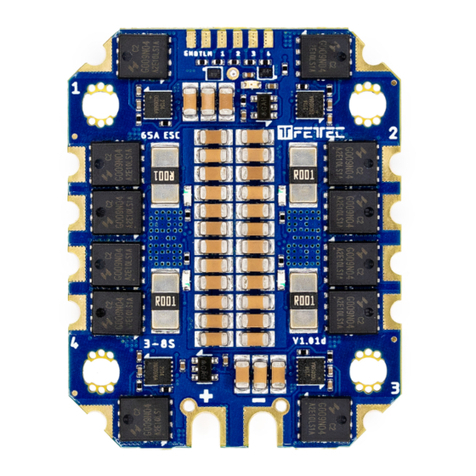
FETtec
FETtec 4in1 ESC 65A manual
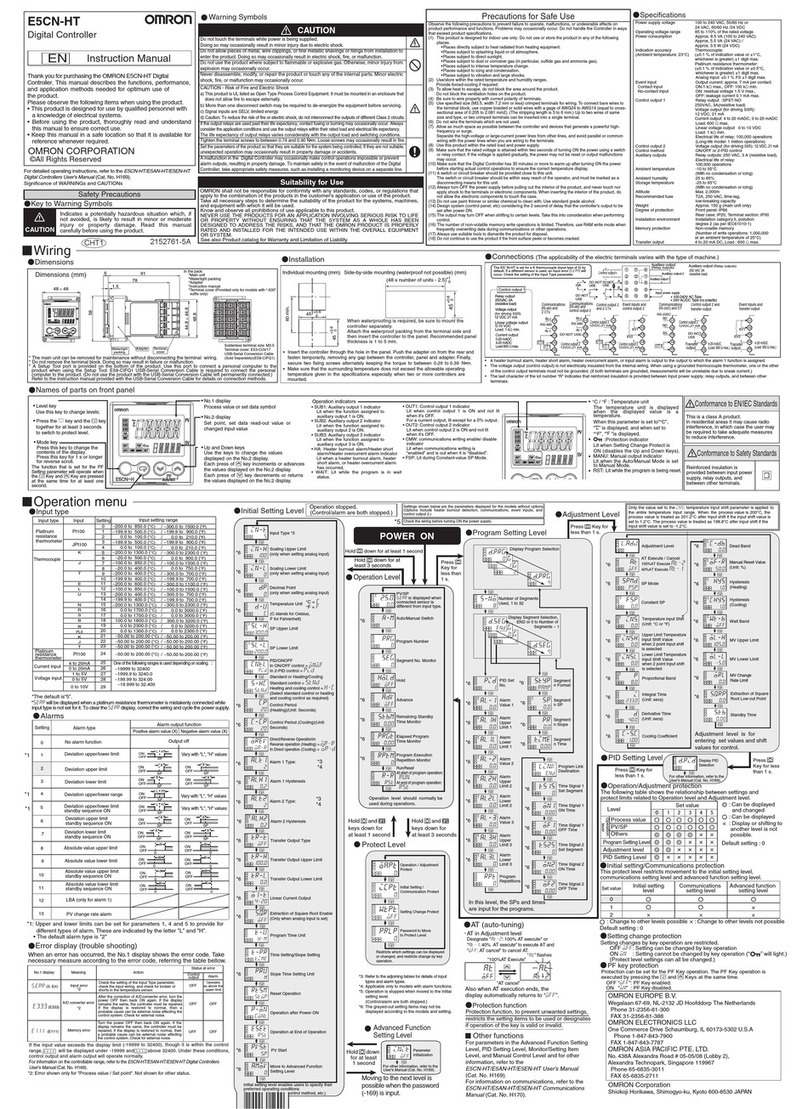
Omron
Omron E5CN-HT instruction manual
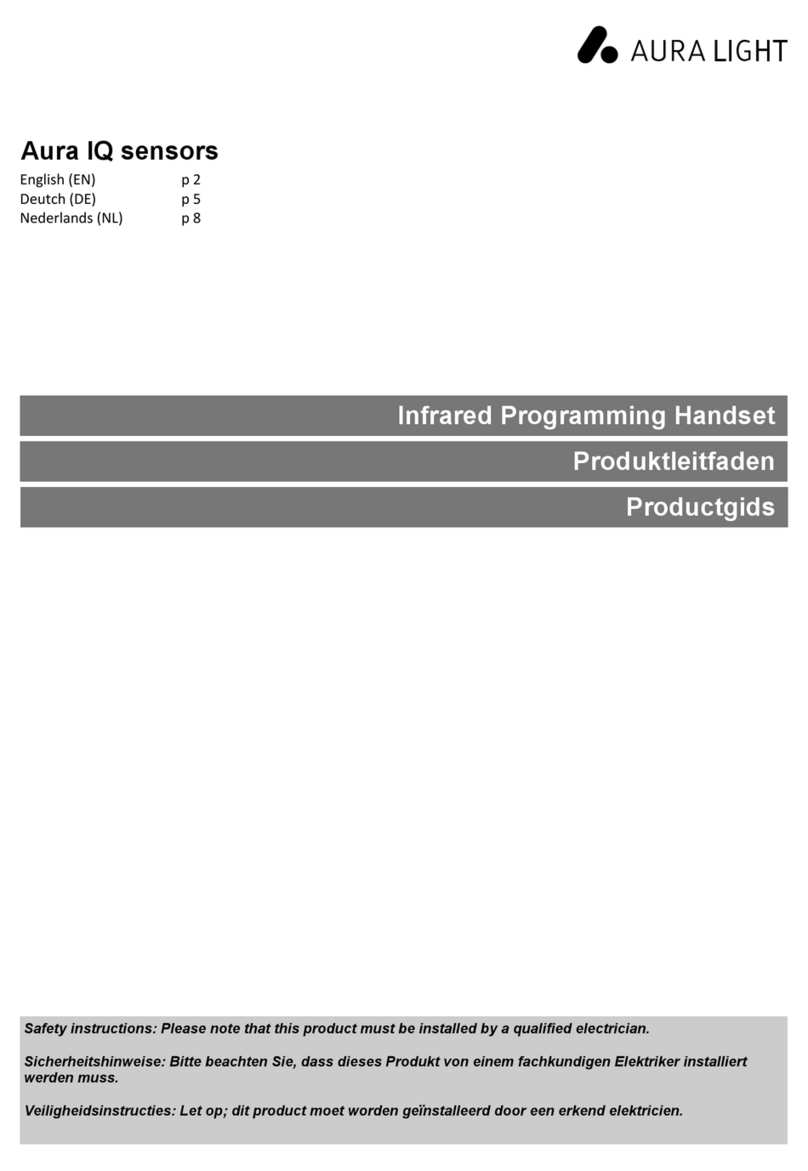
Aura Light
Aura Light UHS5 Product guide
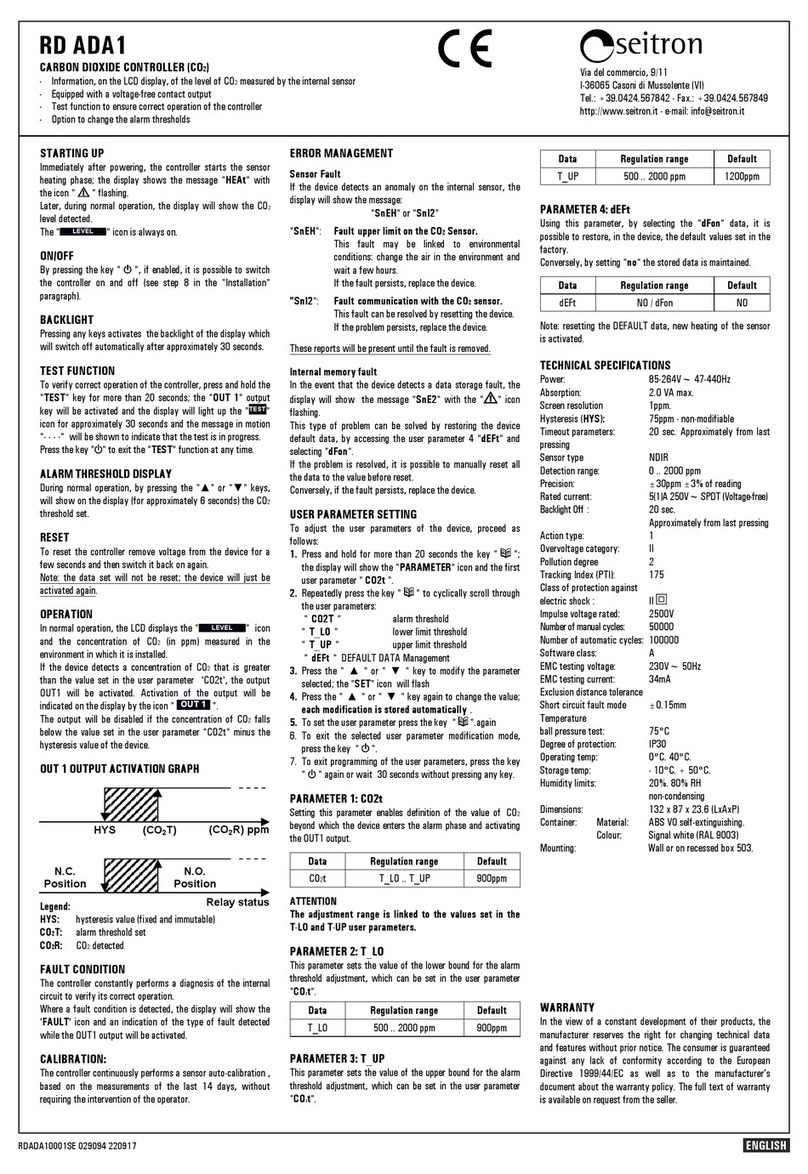
Seitron
Seitron RD ADA1 quick start guide
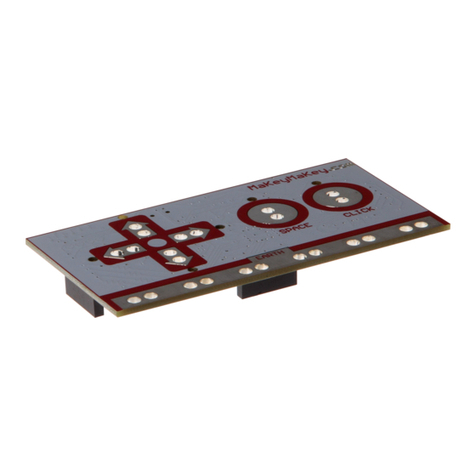
Joy-it
Joy-it MaKey quick start guide

Federal Signal Corporation
Federal Signal Corporation UltraVoice UVRI-B Series Description, Specifications, Installation, and Operation Manual
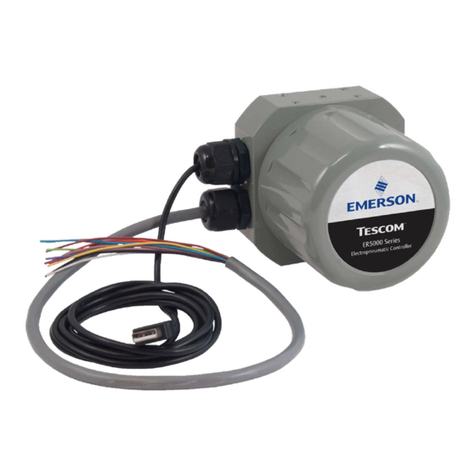
Emerson
Emerson Tescom ER5000 Series user manual
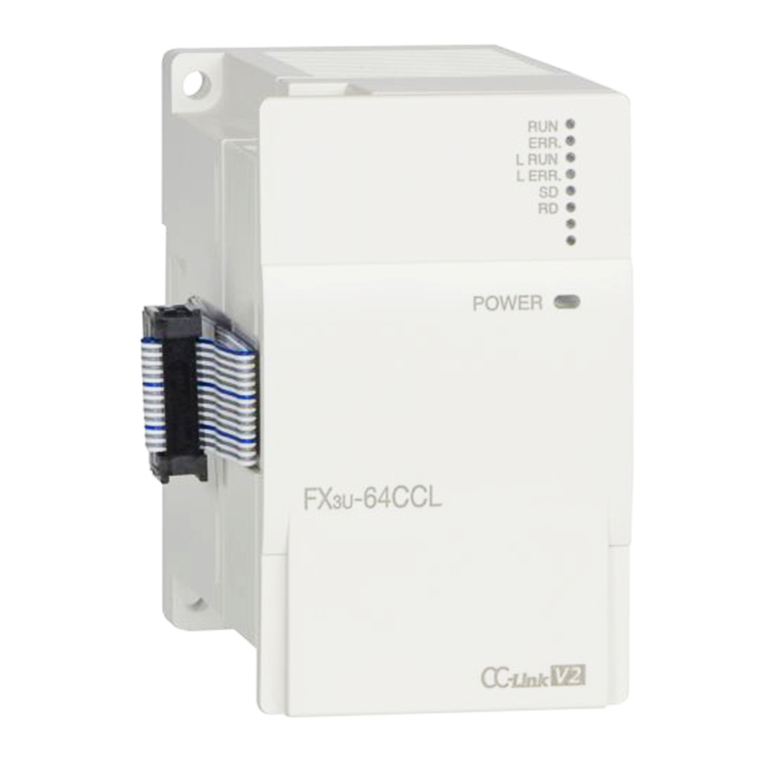
Mitsubishi Electric
Mitsubishi Electric MELSEC FX3U Programming manual
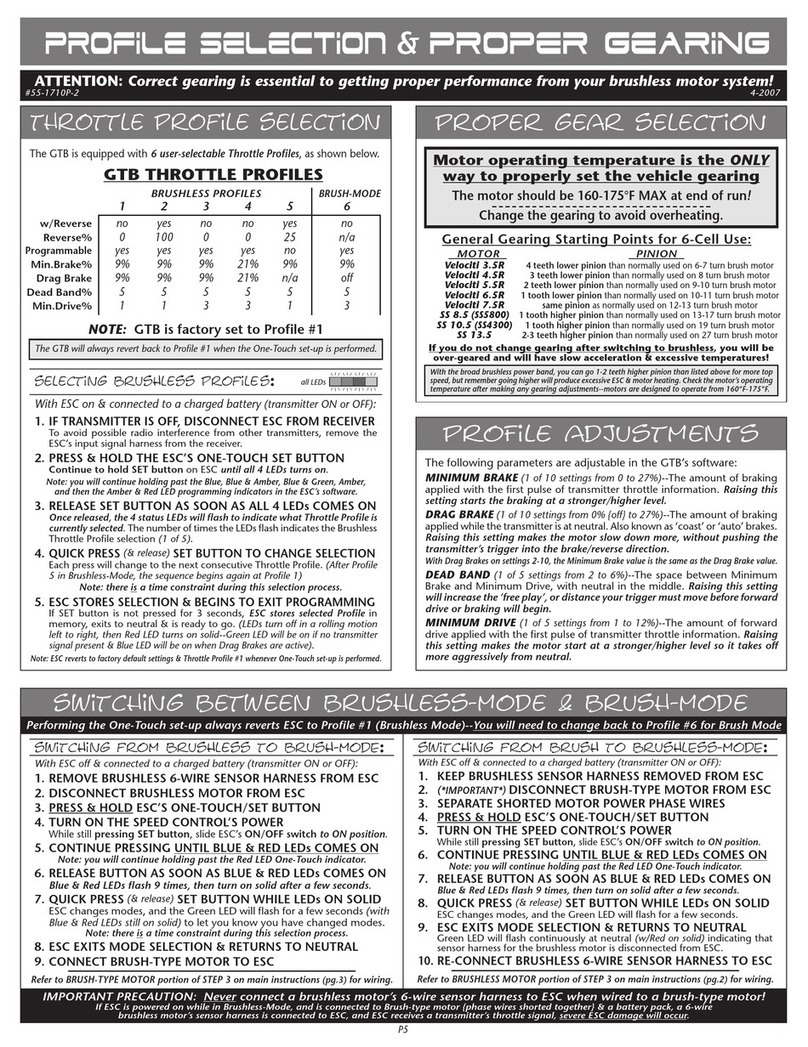
NOVAK
NOVAK GTB - PROFILE SELECTION AND PROPER GEARING manual
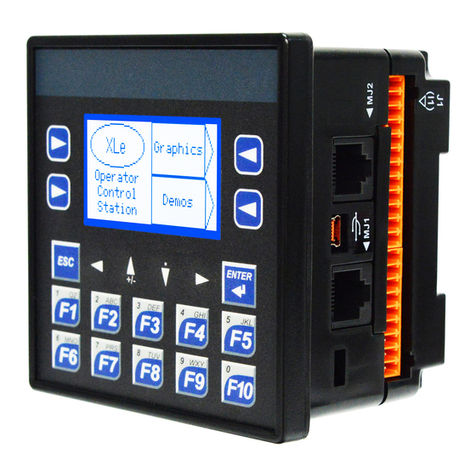
HORNER
HORNER XLE Series datasheet
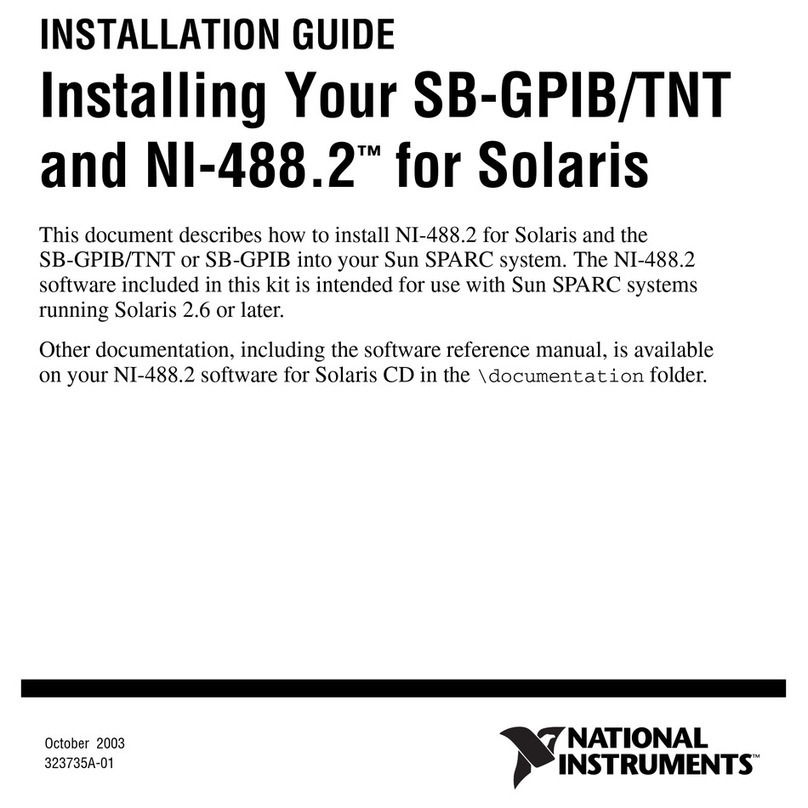
National Instruments
National Instruments NI-488.2 installation guide
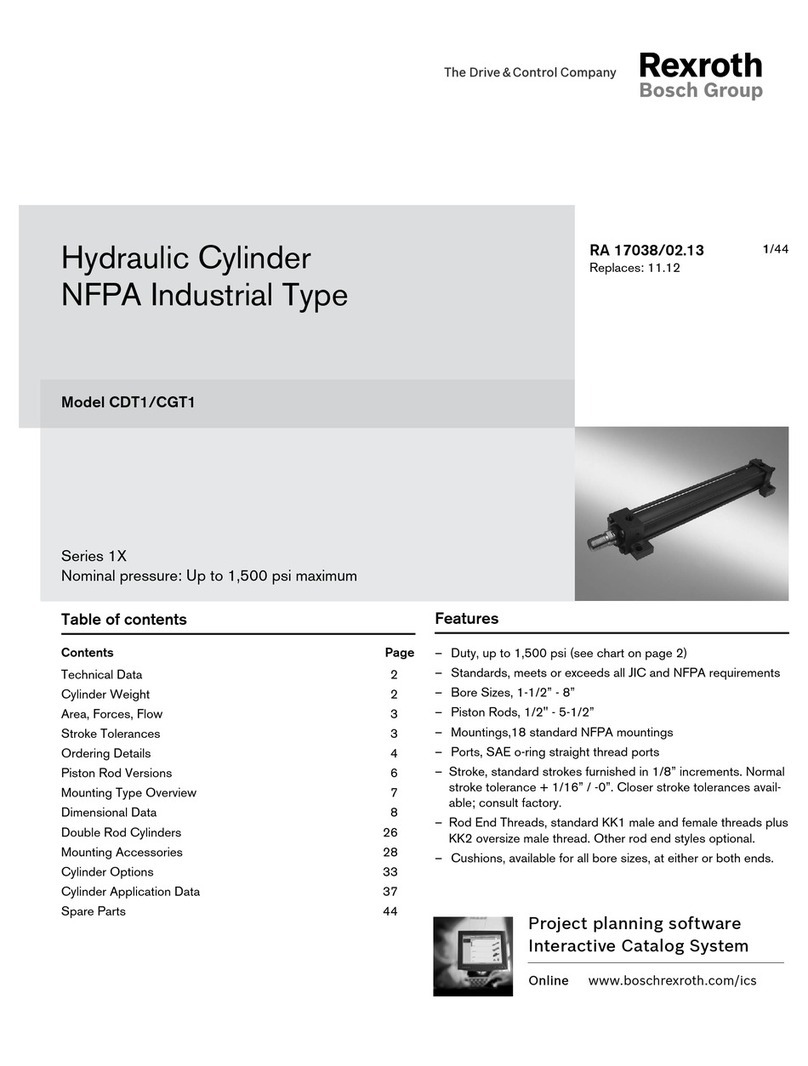
Bosch Rexroth
Bosch Rexroth CDT1 Series manual
